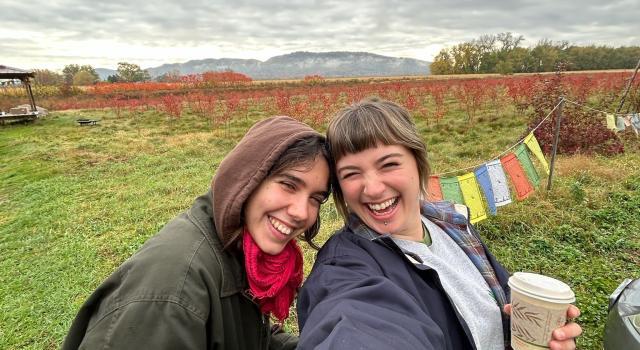Seeing the Forest for the Trees, and Much More

Graduating student Emory Ellis 16F's favorite word is evapotranspiration. It’s the name of the process by which water turns into vapor through evaporation and plants release water back into the atmosphere by transpiration.
Emory’s Div III thesis project (with a committee comprised of Professor of Hydrology Chris Cianfrani, Professor of Plant Science Blair McLaughlin, and Professor of Mathematics Sarah Hews) was inspired by the paper “Forest, trees, water: Cool insight to a hot world,” by David Ellison, et al. (2017). After contacting Ellison in the spring of 2018, Emory discovered that the researcher had questions he didn’t have time to answer: How is forest cover influencing global and regional wind speed, and how does that influence local precipitation recycling? (Precipitation recycling is caused by the friction of a forest’s decreasing wind speed so that the water released by the trees stays over the same system, increasing precipitation, and enabling the cycle to repeat.)
To study the question, Emory taught themself ArcGIS, a software they used to overlay maps and look for the connections in forest cover, wind speed, and precipitation to understand global atmospheric moisture transportation.
As part of an independent study, in 2018 they presented their findings on the impact of forest cover in South America on regional wind speeds and precipitation at Intact Forests of the 21st Century, an international conference held in Oxford, England. This October they discussed their Division III, on cooperative ways of forest cover on a global scale, at the International Union of Forest Research Organizations Conference, in Curitiba, Brazil.
Emory’s Div III was one of two projects on forest hydrology they had in mind when they embarked on their final year. The other, which they plan to continue during the summer of 2020, centers on sap flow in trees as a measure of transpiration.
Utilizing the Harvard Forest, in Petersham, Massachusetts, Emory is studying stands of trees that are 150–300 years old. In particular, they’re investigating hemlock, which invasive species and climate change are threatening, and black birch, which is replacing it and causing changes in the hydrological cycles of the forest. They used an Arduino sensor design from a lab at Oregon State University and built sap-flow sensors to monitor both tree genera. They’ll compare water use over a growing season. Steady forest systems are important to combat climate change, so understanding the impact is critical.
When that project is wrapped, Emory is hoping to earn a master’s and PhD at the University of British Columbia, looking at evapotranspiration in young regenerating forests.



